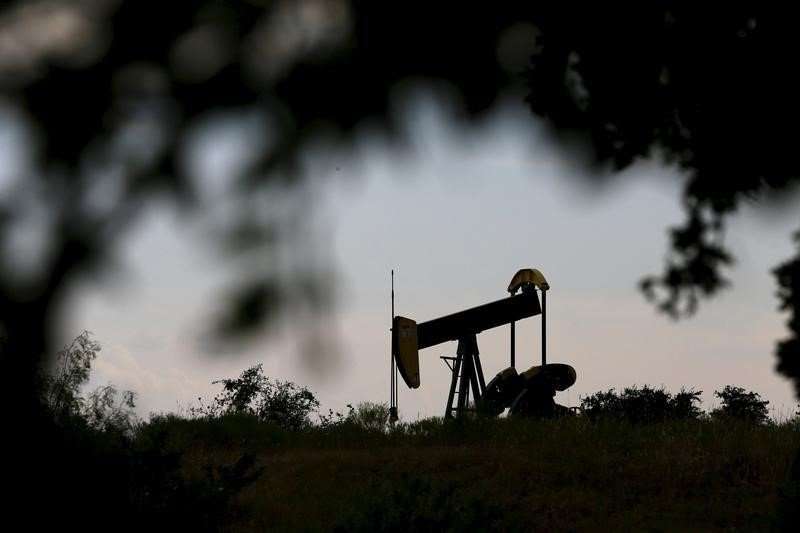Oil prices fall more than 1 pct amid global market rout
SINGAPORE, Feb 6 (Reuters) – Oil prices slumped on Tuesday, extending falls from the previous session as global financial markets tumbled lower in the wake of one of the biggest intra-day falls ever registered on Wall Street.
Brent crude futures LCOc1 were at $67.10 per barrel at 0745 GMT, down 52 cents, or 0.8 percent, from the previous close. Brent hit a session low of $66.82 a barrel earlier in the day.
U.S. West Texas Intermediate (WTI) crude futures CLc1 were at $63.64 a barrel, down 51 cents, or 0.8 percent, from their last settlement. WTI hit a session low of $63.29 a barrel earlier on Tuesday.
“The fall (in crude futures) is mainly attributable to a global sell-off in equities,” said Sukrit Vijayakar, director at consultancy Trifecta Energy.
“People ran to the U.S. dollar as a safe-haven currency. Therefore the dollar strengthens. This makes commodities more expensive to buy, hence oil futures get sold off,” he added. .DXY
Financial markets went into a tailspin on Monday after a sharp rise in U.S. bond yields that raised alarms over rising inflation and potentially higher interest rates.
The Dow Jones Industrial Average’s .DJI 4.6 percent loss on Monday was its largest in percentage terms since August 2011, and the day’s 1,175 point loss was its biggest ever in absolute terms. The index was briefly down more than 6 percent. (Full Story) (Full Story)
U.S. S&P 500 futures ESc1 tumbled 3 percent in Asian trade on Tuesday, extending Monday’s sell-off. (Full Story)
“Suddenly, inflation has become one of the most-talked about issues in markets,” U.S. bank J.P. Morgan said in a note to clients.
The correction in oil is also being driven by fundamentals, traders said.
Despite the Organization of the Petroleum Exporting Countries (OPEC) and Russia cutting production in order to tighten the market, crude remains in ample supply.
That is largely due to soaring U.S. shale oil production C-OUT-T-EIA, which has jumped by almost 18 percent since mid-2016 to 10 million barrels per day (bpd), surpassing top exporter Saudi Arabia.
Only Russia produces more, averaging 10.98 million bpd in 2017. (Full Story)
And U.S. oil output will likely rise further
The amount of rigs drilling for oil rose to 765 by late January, more than double the 316 that were in operation during 2016’s production lull.
There is also a seasonal downturn to demand, as many refineries shut for maintenance at the end to the peak-consumption winter season in the northern hemisphere.
The largest U.S. refinery, Motiva Enterprises’ 603,000-bpd Port Arthur facility in Texas, began a planned one-month overhaul on Monday. (Full Story)
Despite this, overall oil demand remains healthy, with U.S. bank Goldman Sachs estimating 2018 growth of 1.8 million bpd, with 40 percent of this coming from China and India alone.











Add comment